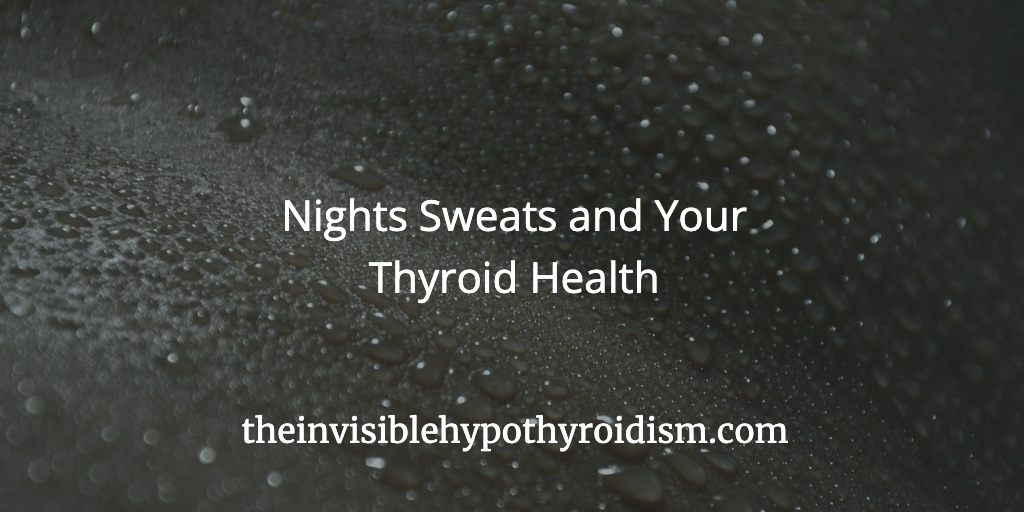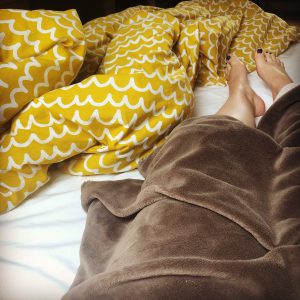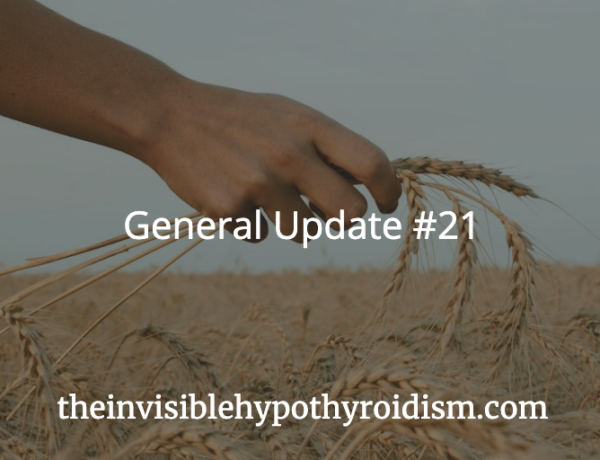Do you wake up during the night dripping in sweat?
Do you experience a flushing of heat?
A well-known symptom of hypothyroidism is cold intolerance, but did you know that many thyroid patients also complain of night sweats?
Related Article: Heat Intolerance and Thyroid Disease
If you’re experiencing this particular issue, please see some possible causes to discuss with your doctor below.
1. Sex Hormones
Your sex hormones – oestrogen, progesterone, testosterone etc. – are also a part of your endocrine system. Therefore, those with thyroid issues can may also experience sex hormone imbalances. When one goes wonky, so can others.
“Oestrogen dominance” is debated as to whether it really exists, but many people do state they feel unwell when their oestrogen is high, and then feel better when implementing protocols to support normalising it back out.
To check if you have “oestrogen dominance”, you can test your progesterone level at its peak, around day 21 of your cycle (this may differ or be difficult to predict if you have an irregular cycle), and oestrogen on cycle days 3-5. Testosterone can be tested at anytime during the month and checking FSH may also be beneficial. These tests give an overview of your sex hormone health and can help determine if you have an imbalance in them. This UK test checks almost all of the above tests in one go (minus progesterone – you could order this separately) and this US lab checks all of them in one test.
A lot of women with hypothyroidism are also approaching their menopausal or perimenopausal years, so discussing this possibility with their doctor is also important. Hot flushes and night sweats are a common menopause symptom.
I personally experienced extreme night sweats for the first six weeks after giving birth to my child. A common postpartum symptom as hormone levels are adjusting and fluctuating so much, if you have recently given birth, then this is also worth keeping in mind. I would wake up throughout the night absolutely drenched in sweat!
2. Over Medication for Hypothyroidism
It’s also good to check that you’re not overmedicated on your thyroid medication, as being so can lead to hyperthyroidism and thus cause symptoms such as feeling hot and flushed.
You need a full thyroid panel (note: full, not just one or two tests) running, to include TSH, Free T3, Free T4 and Reverse T3 and thyroid antibodies TPOab and TGab wherever possible. A suppressed TSH can be normal on thyroid meds containing T3, but your Free T3 and Free T4 should be within range, for hyperthyroidism to not be present. TSH alone is not accurate to go by. Please see optimal levels here. [1]
3. Hashimoto’s
Another thing to keep in mind is that if you have autoimmune hypothyroidism, which around 90% of us with hypothyroidism do, then this can cause us to swing between hypo and hyper symptoms.
This means that we may swing from feeling very hot or very cold rather suddenly.
To check for Hashimoto’s and to monitor how you are doing e.g. if it’s calming down, you need those two antibodies tests TPOab and TGab doing. You can read how to better control it here. Find out how to order your own testing here.
Read how I got my Hashimoto’s in to remission here.
4. Adrenal Dysfunction
The adrenal glands are also part of the endocrine system and many thyroid patients find that they develop adrenal dysfunction on top of thyroid disease.
Adrenal fatigue (note: it is more accurately referred to as hypothalamic-pituitary axis dysfunction) is rather common among thyroid patients and testing for it with a 24 hour, four point saliva test will show if you do indeed have it.
When I had high cortisol adrenal fatigue, it was causing me to have hot flushes where I became unbearably hot and sweat buckets. Even in December!
Other Tips
As well as taking into consideration the above info and exploring them, some of these tips may also help you to cope with night sweats:
- Take a cool shower before bed to cool down.
- Replace a heavy duvet with a light sheet.
- Spray your bed sheets in cold water so that as you lay on them, they’ll slowly dry but help keep you cool in the process.
- Applying bags of ice cubes, ice packs or frozen peas to your wrists, back of neck and feet can also help cool you down.
- Consider investing in a fan or air conditioning at home, especially in the warmer rooms of the house and your bedroom so that your sleep is affected as little as possible. You can also try placing bottles of frozen water behind or in front of fans for a cooler breeze.
- Keep curtains and blinds closed during the day to keep heat out.
- Use cotton bed linen and clothing as it is breathable and allows ventilation.
- You can also stick your bed sheets in the fridge or freezer (in a bag) for 5 minutes or so before bed, to cool them down, too.
- Look at investing in a Chillow.
- Wear loose fitting clothes for ventilation.
What is your experience with night sweats?
You can click on the hyperlinks in the above post to learn more and see references to information given.
[1] https://www.ncbi.nlm.nih.gov/pubmed/15705921/







1 Comment
Patricia
October 1, 2023 at 8:35 pmI’m 66 and have just been diagnosed. I’ve had night sweats for some years even though I was on HRT and all other Menopause symptoms went with with HRT